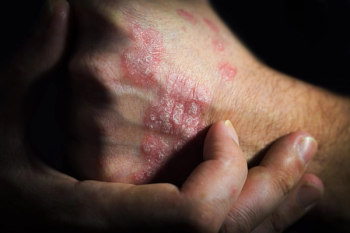
Understanding Lupus Symptoms, Diagnostic Barriers, and Affected Populations: Margrit Wiesendanger, MD, PhD

Margrit Wiesendanger, MD, PhD, explores lupus symptoms, diagnosis challenges, and the importance of early detection to prevent inflammation-related damage.
In part 1 of an interview with The American Journal of Managed Care®, Margrit Wiesendanger, MD, PhD, provides an overview of
Wiesendanger is a clinical rheumatologist who treats patients with a range of diagnoses, including lupus, and serves as the program director for rheumatology fellowship training within the Mount Sinai Health System. She also co-directs the "Foundations of Immunology and Microbiology" course at the
This transcript was lightly edited; captions were auto-generated.
Transcript
Can you provide a brief overview of what lupus is and how it typically presents in patients?
Systemic lupus is an autoimmune condition whereby a person's own B and T cells become activated against normal body tissues instead of performing their normal role of defense against microbes and assisting in wound healing and tissue repair.
This can affect many different organs but most commonly the joints, skin, the blood system, [and] the lining layers of the lungs and heart. In about a third of patients, the kidneys are also affected. If the inflammatory response is not recognized and treated, it can lead to long-term damage, including renal failure, so it's very advantageous to recognize the condition as early as possible.
What challenges do patients commonly face in receiving a timely diagnosis?
One of the challenges with early diagnosis is that the condition is rare, affecting about 1 in 1000 individuals, and initial symptoms may be nonspecific or very subtle. I will give you an example. Because in lupus the same immune cells that would normally defend against viruses are abnormally activated against body tissues, it can look and feel just like a viral infection with fever, joint and muscle aches, fatigue, for example.
Another example is the lupus rash. It could be mistaken for another type of rash and attributed maybe to an allergy, rosacea, or some other condition.
The third common example would be chest pain, cough, [and] difficulty breathing. This could be mistaken for pneumonia, a blood clot, or other heart disease.
The main challenge is that lab testing is essential to clinch the diagnosis. Some of these labs are routinely obtained, and some are not routine, they're very specialized laboratory tests. The physician who first sees the patients, either in the ambulatory space or in the emergency room, they need to have some index of suspicion in order to proceed with the diagnosis.
Which patient populations are most affected by lupus?
Lupus can occur at any age, and people of all genders and racial backgrounds can be affected, but it is most prevalent in women aged 15 to 40 years. Ninety percent of patients with lupus are women, and the most common initial symptom is a symmetric arthritis of the small joints, so hands and wrists would be typical.
The second most common would be the rash that's solicited by exposure to sunlight, so-called photosensitivity, and then also chest pains due to inflammation around the heart or lungs. The kidneys, though, would not be so easy to recognize because there wouldn't be a pain symptom associated with that, but you could experience fatigue or peripheral edema if the kidneys are severely affected.
The differences in presentation would really be based on whichever organ is first involved at the time, but it doesn't really differ across patients.
Newsletter
Stay ahead of policy, cost, and value—subscribe to AJMC for expert insights at the intersection of clinical care and health economics.









































